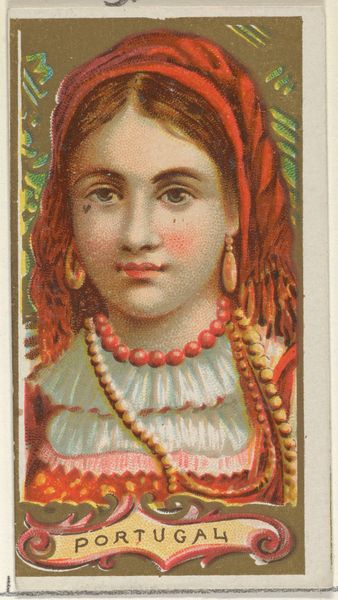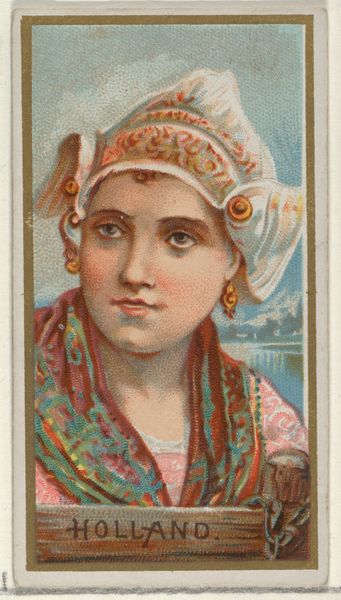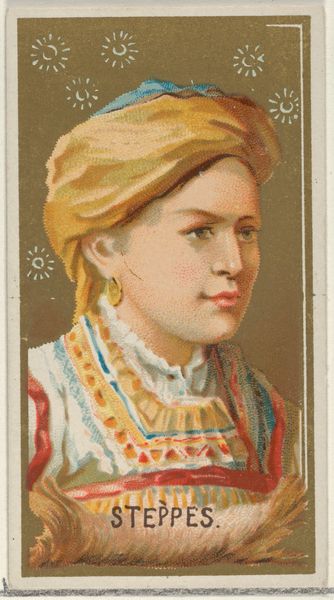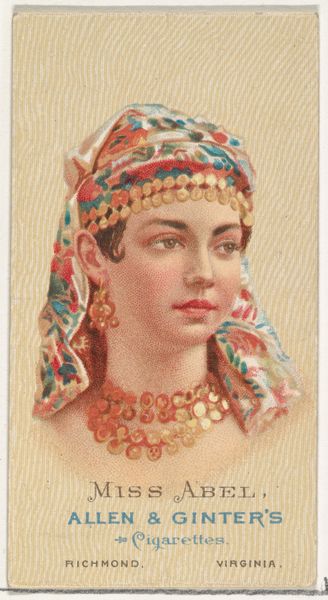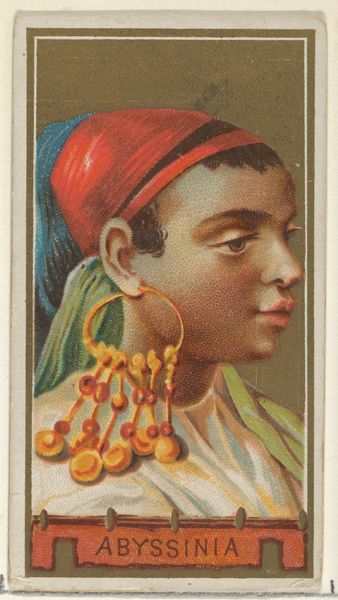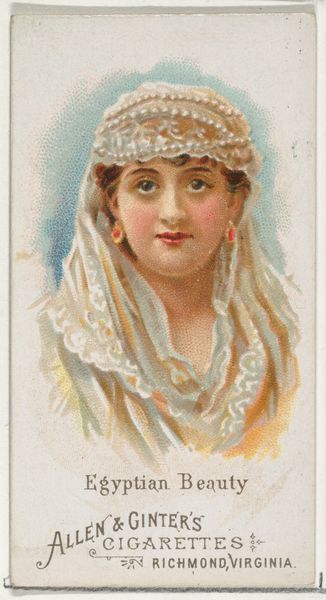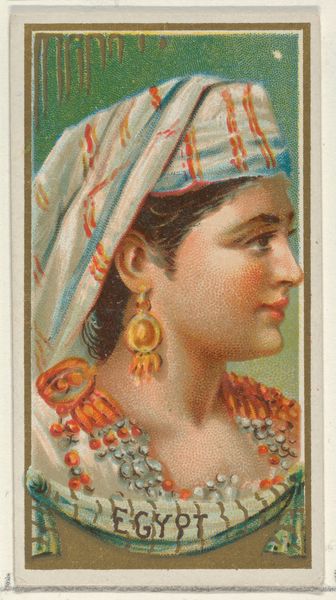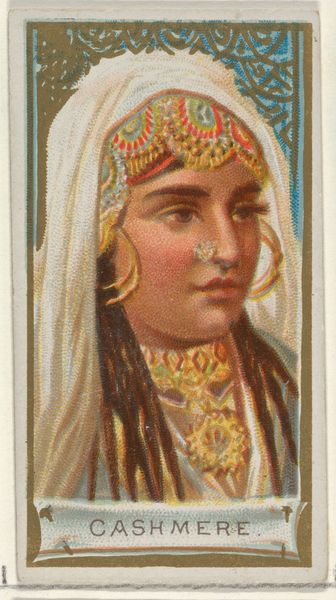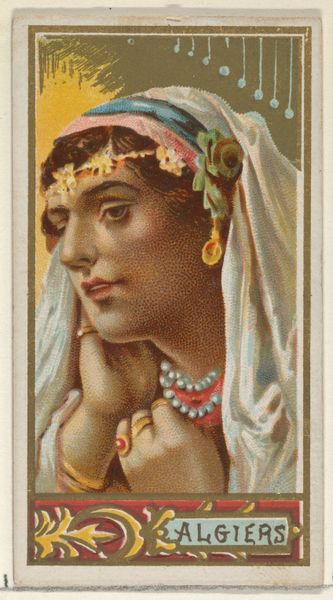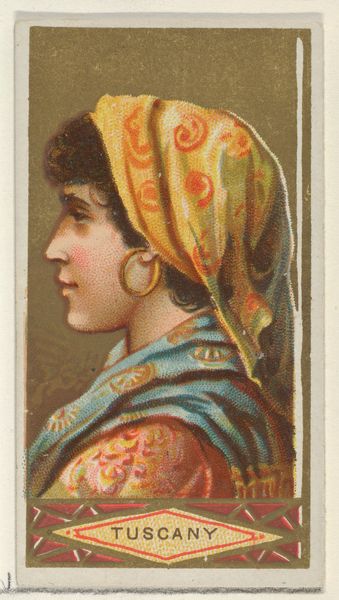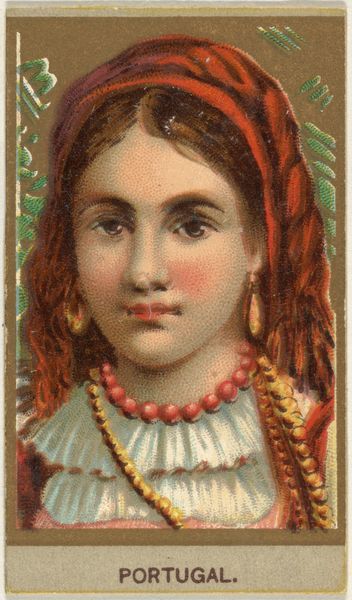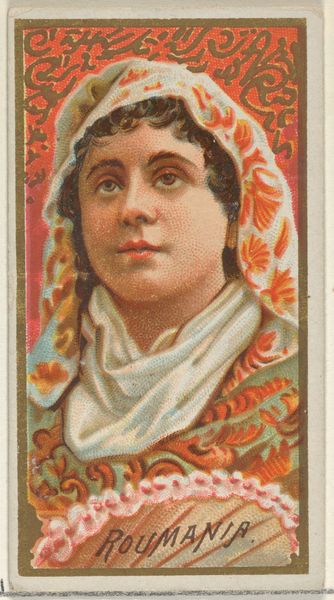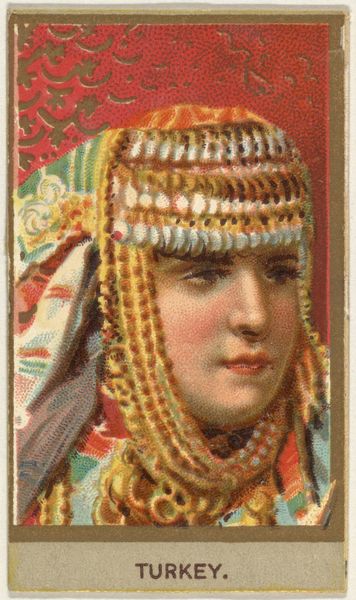
Russia, from the Races of Mankind series (T181) issued by Abdul Cigarettes 1881
0:00
0:00
drawing, print
#
portrait
#
drawing
# print
#
figuration
Dimensions: Sheet: 2 3/8 × 1 3/8 in. (6 × 3.5 cm)
Copyright: Public Domain
Curator: Let's discuss this small but captivating piece: "Russia," one from the "Races of Mankind" series by Abdul Cigarettes, dating back to 1881. Editor: It's immediately striking how such a mass-produced object aims for what feels like a genuine portrait. The stippling and the subject's serene expression give it a sort of melancholic beauty. Curator: Absolutely. The “Races of Mankind” series exemplifies how imagery was deployed in the service of commerce and nationhood. Consider that these cigarette cards, intended to boost sales, also circulated ideas about racial typologies and national identities. Editor: Interesting point! How were they produced? Were these prints originally drawings, and what sort of paper was used? The means of production shaped both its dissemination and perception. These weren't crafted in some fine art atelier. Curator: Precisely. These were printed—likely through chromolithography—allowing for color and relatively fast production for mass distribution. And that itself reinforced its broader reach within a rising consumer culture. Editor: Which inevitably touches upon the consumer. People held these in their hands; what sort of material relationship did they develop? Did they scrutinize it? Exchange with others? Pocket it? These material acts are also social acts. Curator: I imagine that it sparked curiosities and solidified or challenged preconceived notions, whether that was conscious or unconscious. The image is presented within a frame, but her gaze is direct, as if peering out, fostering a false sense of familiarity. Editor: The pom-poms on her hat—I imagine these are felt? I'm immediately considering the origin and how that materiality signified cultural craft versus mass industrialization. Also the application of bright, cheap-made dyes surely made a strong first impression. Curator: That contrast between the “exoticized other” and the mechanisms of mass production encapsulates the dualities inherent to such objects. In this miniature form, global hierarchies are presented casually, even attractively. Editor: Yes. Understanding its life within global trade adds crucial layers to our interpretation. The history of "Russia," then, isn’t just an art historical narrative, but the material manifestation of the politics embedded in the object. Curator: Thank you; that provides valuable nuance about how images work within networks of consumption and power. Editor: Of course! Seeing it less as isolated artwork and more as an artifact embedded within global exchange and a specific materiality allows for expanded social understanding.
Comments
No comments
Be the first to comment and join the conversation on the ultimate creative platform.
